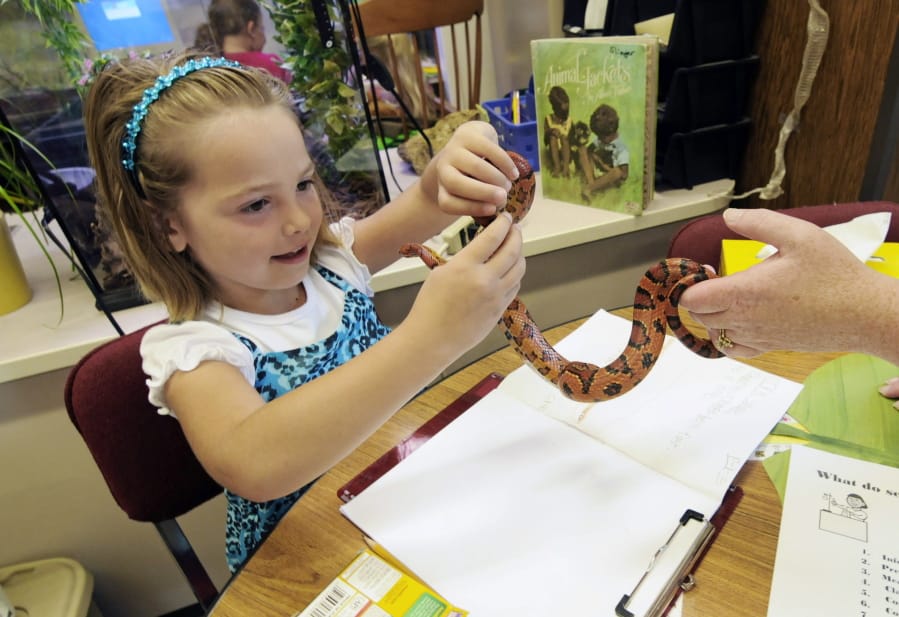Reptiles are easier to keep than ever, with special equipment available in almost any pet store. This ease of entry, however, means that beginners can end up in over their head.
There are species that provide a rewarding introduction to these fascinating creatures. There are others to steer away from.
A primer:
LIZARDS
The leopard gecko is a cute little lizard that’s easy to care for. These desert natives don’t need extra humidity except when shedding, but also don’t need much extra heat; just provide a heated basking area.
Leopard geckos eat live insects that are readily available, such as crickets, mealworms and waxworms. “Pretty much any pet store is going to have those,” says Bonnie Keller, who has over 19 years’ experience in pet reptile rescue.
You won’t need the special UVB light bulbs that many species require. “Leopard geckos are nocturnal, so don’t need synthetic sunlight,” says Jesse Rothacker. His rescue, Forgotten Friend Reptile Sanctuary, often takes in animals that are unhealthy due to improper lighting, so it’s good to start with a species where that’s not an issue.
Finally, leopard geckos are captive bred. Avoid buying wild caught reptiles both for conservation reasons and because they’re less likely to have diseases and parasites.
SNAKES
Corn snakes are great for beginners. Native to the U.S., they’re suited to our environment.
“It’s a very hardy snake, and it’s a snake that’s friendly for handling,” says Rothacker.
Widely bred for the pet trade, they come in a range of colors. “If you want a pink snake, you can get a pink corn snake,” says Keller.
Feeding is easy, if you can get over the ick factor: Snakes need to eat whole prey. This is non-negotiable.
“There is no Purina snake chow,” says Keller. “There are no vegetarian snakes.”
You can buy frozen mice at a pet store. Thaw them in a cup of warm water — snakes prefer their food warm — and you’re ready to go.
TURTLES AND TORTOISES
Even the reptile-wary tend to like turtles, but Keller is blunt: “They’re cute and they have a lot of personality, but they’re a terrible pet.”
Water turtles need a large tank with good filtering and frequent water changes. Avoid red-eared sliders, which are sold inexpensively as babies — and frequently get dumped on rescues.
“It’s not a bad pet if you understand that you need to spend a thousand dollars for the setup — the tank, the lights, the filters,” Rothacker says. “And they’re not going to stay the size of a quarter — they’re going to be the size of a dinner plate, they swim in their own toilet, and they’re going to live 50-plus years.”
OK, maybe not.
So how about a tortoise? They’re complicated too. They need strong UVB light, which is tricky to provide indoors. Without it, says Keller, “their shells grow in strange shapes, their nervous system does not function properly. It takes years to see the effect, but by the time you’ve noticed it you’ve significantly shortened the lifespan of your pet.”
Keller only recommends tortoises for warm climates where they can live year-round outside. Rothacker is a little less strict, but agrees they need to spend a lot of time outdoors.
Many tortoises also get way too big. That baby sulcata tortoise may be the size of a golf ball, but it’s the third largest tortoise species in the world. “They can actually dig under the foundation of your home,” says Keller. ”
FURTHER CAUTIONS
Rothacker says that one of the top reasons people surrender reptiles is that they’ve gotten too big. The iguana is a common example.
“It goes from needing a tank to needing its own bedroom,” he says.
Iguanas also can be aggressive and can hurt you, and not just with their strong bite. “They have not only very large talons, but also a ridge going down their back that is like a serrated knife on their tail that can cut right down to the bone,” says Keller.
QUALITY CARE
Before getting a reptile, make sure you have a vet in your area that treats them. Keller says the care sheets at the big pet stores are generally of good quality now, but you’ll get excellent advice if you adopt from a rescue group.
In addition to temperature, humidity and lighting requirements, remember that reptiles have behavioral needs too. Provide an appropriate habitat with opportunities to move and explore. Leopard geckos need hide boxes, and you can buy a kind of sticky sand that will allow them to dig their own burrows. .
And remember to change it up once in a while.
“At Christmas, we take some pine branches off our tree and put them into our snake enclosures,” says Rothacker. “It doesn’t take much, but put a new branch or rock in there and you’ll really see them exploring these things.”



